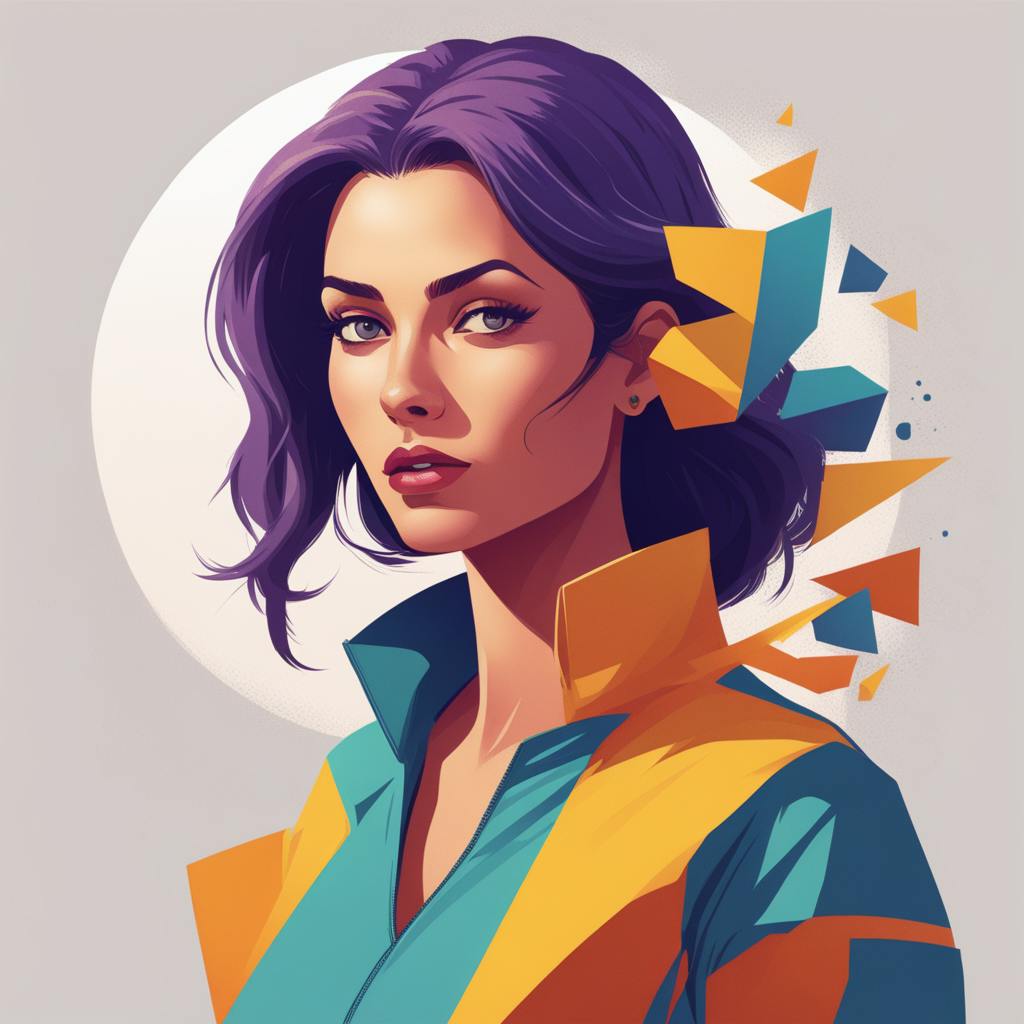Creative technology stands as a transformative force that shapes innovation across various industries. By merging artistic vision with technological prowess, creative technology fuels the inventive process and fosters groundbreaking solutions that redefine traditional paradigms. As innovations continue to surface, the influence of creative technology is undeniably profound, driving creativity and technological advancement forward.
The Impact of Innovative Technology in Creativity
Creative technology serves as a critical catalyst in unlocking new realms of creativity and expression. It offers a plethora of innovative tools that empower individuals and organizations to push boundaries. From augmented reality (AR) and virtual reality (VR) to artificial intelligence (AI) and machine learning, these technologies expand the horizons of what is possible, enabling creators to blend the virtual with the physical seamlessly. For instance, AR and VR offer immersive experiences that revolutionize storytelling, education, and entertainment, making them indispensable in creative processes.
Creative Uses of Technology
Technological advancements have revolutionized traditional creative processes, opening doors to limitless possibilities. For example, 3D printing has transformed industries such as fashion, manufacturing, and architecture by enabling rapid prototyping and customization. Similarly, AI-powered tools offer artists and designers new ways to generate unique pieces of art, compose music, or craft engaging narratives. These creative uses of technology not only streamline production but also inspire entirely new genres and art forms.
Technology for Creative Professionals
For creative professionals, technology is not just a tool but an essential partner in realizing their visions. Digital software suites, such as Adobe Creative Cloud, provide artists, photographers, and designers with an array of powerful tools for creating, editing, and sharing their work. Furthermore, cloud-based platforms facilitate collaboration among teams worldwide, allowing creative ideas to flourish unfettered by geographical constraints. This democratization of technology ensures that creative professionals have the resources they need to innovate continually.
Technological Tools for Creativity
Thanks to a diverse ecosystem of technological tools, creators now have access to resources that enhance their ability to innovate. Tools such as digital drawing tablets, motion capture devices, and sound engineering software empower individuals to transform raw ideas into polished masterpieces. Moreover, platforms like open-source libraries and online tutorials make these tools accessible to a wider audience, enabling aspiring creators to learn, experiment, and excel in their craft.

AI made with Dean Jones
Tech-Driven Creative Solutions
In the business world, tech-driven creative solutions are crucial for staying competitive in a rapidly changing environment. By leveraging creative technology, companies can construct comprehensive marketing strategies, develop user-centric products, and enhance customer experiences. Data analytics and AI allow businesses to understand consumer behavior better, tailor their offerings, and predict market trends with greater accuracy. This synergy between technology and creativity is essential for organizations seeking sustainable growth and innovation.
Frequently Asked Questions
What is creative technology?
Creative technology refers to the intersection of creativity and technology, where digital tools and processes are used to enhance or facilitate creative endeavors.
How does creative technology impact innovation?
Creative technology impacts innovation by providing new tools and platforms for problem-solving, enabling the creation of unique and imaginative solutions that were previously not possible.
Can traditional artists benefit from creative technology?
Absolutely. Traditional artists can incorporate digital tools into their work process to experiment with different styles, reach a broader audience, and collaborate with others globally.
FAQ: The Role of Creative Technology in Fostering Innovation
What is the significance of creative technology in the process of innovation?
Creative technology refers to the intersection of creativity and technology, where new tools and platforms are used to push the boundaries of innovation across various domains. Its significance lies in its ability to enable more iterative, user-centric, and efficient processes for generating novel solutions to complex problems. By integrating disciplines such as design, engineering, art, and digital media, creative technology removes traditional silos, encouraging a multi-disciplinary approach to problem-solving.
This blend cultivates an environment where experimentation and collaboration are not only possible but encouraged. It allows for the creation of prototypes and models that can be iteratively improved upon, shortening the time from ideation to implementation. Furthermore, creative technology often leverages emerging technologies such as AI, AR/VR, and IoT, which provide unprecedented opportunities for innovating in products, services, and experiential design.
How are businesses using creative technology for their innovative projects?
Businesses are increasingly incorporating creative technology in various aspects of their operations to stimulate innovation. Here are some ways in which it is being used:
- Product Development: Companies use creative technology tools to develop and test new products with enhanced features and functionality. Techniques like 3D printing and digital prototyping allow rapid iteration and refinement.
- Marketing and Customer Engagement: Augmented reality (AR) and virtual reality (VR) offer immersive experiences that redefine how brands interact with their customers, offering more engaging and customized marketing solutions.
- Design and User Experience: Creative technology helps designers craft intuitive and accessible interfaces. Tools that facilitate rapid prototyping and user testing ensure products meet consumer needs effectively.
- Creative Problem Solving: By applying artificial intelligence and machine learning, businesses derive insights from vast datasets to identify patterns and solutions that might not be visible through traditional analytical methods.
- Collaboration and Remote Work: Innovative collaborative tools and platforms have transformed how teams work together, irrespective of geographic locations, enabling a seamless integration of different skills and perspectives.

AI made with Dean Jones
Can you provide some examples of creative technology driving innovation?
Certainly, here are a few examples across different industries:
- Healthcare: AI-driven platforms are being used to design personalized medicine strategies that are specific to individual patients. Virtual reality is also used for advanced surgery simulations and pain management therapies.
- Retail: Companies like IKEA use AR apps to allow customers to visualize furniture in their own home settings before making a purchase, enhancing the shopping experience and reducing the rate of returns.
- Entertainment: The film and gaming industries use creative technology extensively. For instance, CGI and motion capture technology have revolutionized storytelling and character development in films and games.
- Education: EdTech companies are using VR and AR to create immersive learning experiences. For example, students can take virtual field trips to historical sites or immerse themselves in complex subject matter through interactive simulations.
What is the future outlook for the role of creative technology in innovation?
The future of creative technology is promising, as its role in innovation is expected to grow even more substantial. Here are some notable trends shaping its future:
- Increased Interdisciplinary Collaboration: As the convergence of different fields increases, the importance of cross-disciplinary skills will rise, leading to more unique innovations driven by diverse perspectives.
- Enhanced Personalization: With advanced data analytics and AI, creative technology will continue to evolve towards providing hyper-personalized solutions in areas ranging from marketing to healthcare.
- Sustainability and Ethical Design: As global pressures mount regarding environmental and ethical considerations, creative technology may play a critical role in designing sustainable and equitable solutions.
- Extended Reality (XR): XR technologies (including AR, VR, and mixed reality) will further impact how industries think about user engagement, training, and operational efficiencies.
Conclusion
Creative technology plays a pivotal role in driving innovation by integrating artistic vision with technological advancement. It redefines the creative landscape, offering innovative technology in creativity, enabling creative uses of technology, and providing vital tools for creative professionals. By fostering tech-driven creative solutions, it paves the way for unprecedented opportunities in various sectors. As we continue to witness the transformative power of creative technology, it is clear that its integration will remain central to the creative process and innovation in the foreseeable future.

